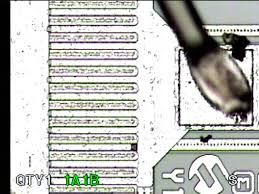Unlock Microchip PIC16C52 Microcontroller Program
A variety of packaging options are available to facilitating Unlock Microchip PIC16C52 Microcontroller Program. Depending on application and production requirements, the proper device option can be selected using the information in this section after Crack Microcontroller ST7FLITES2M6 Embedded Flash Memory. When placing orders, please use the PIC16C505 Product Identification System at the back of this data sheet to specify the correct part number.
The UV erasable version, offered in ceramic side brazed package, is optimal for prototype development and pilot programs in order to Pull Microcontroller IC ATmel ATmega32A. The UV erasable version can be erased and reprogrammed to any of the configuration modes.
Microchip’s PICSTARTâ PLUS and PRO MATEâ programmers all support programming of the PIC16C505. Third party programmers also are available; refer to the Microchip Third Party Guide for a list of sources.
The availability of OTP devices is especially useful for customers who need the flexibility for frequent code updates or small volume applications. The OTP devices, packaged in plastic packages permit the user to program them once before Extract MCU Chip STMicroelectronic ST62T15C6. In addition to the program memory, the configuration bits must also be programmed.
Microchip offers a QTP Programming Service for factory production orders. This service is made available for users who choose not to program a medium to high quantity of units and whose code patterns have stabilized. The devices are identical to the OTP devices but with all EPROM locations and fuse options already programmed by the factory which can facilitate the progress of Crack Microchip PIC16C505 Processor Memory.
Certain code and prototype verification procedures do apply before production shipments are available. Microchip offers a unique programming service where a few user-defined locations in each device are programmed with different serial numbers. The serial numbers may be random, pseudo-random or sequential. Serial programming allows each device to have a unique number which can serve as an entry-code, password or ID number when Reverse Microcontroller Software.


